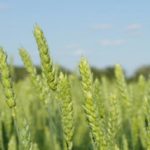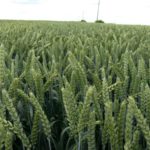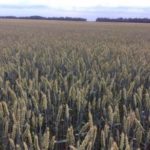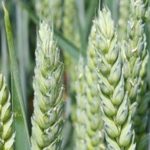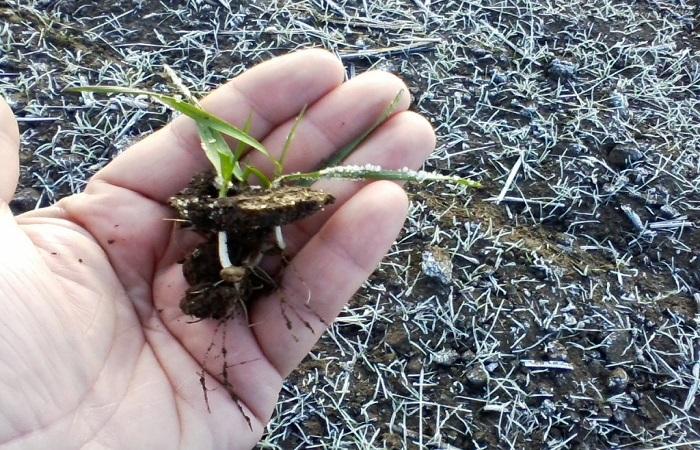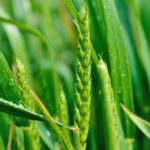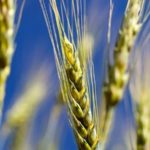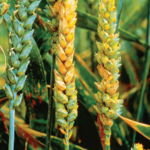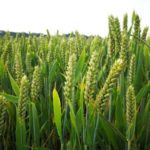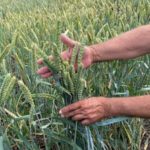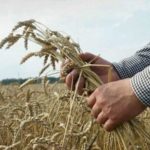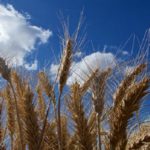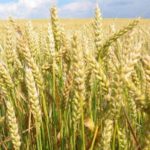Spring wheat is considered one of the main food crops around the world. The grain is used for preparing cereals, pasta, and in baked goods. Spring cereal bran and straw are an indispensable feed for farm animals. Spring wheat of the Aquilon variety was developed by German scientists. In 2013, varietal tests were completed in the Russian Federation, and the cereal was officially approved for cultivation in various climatic zones.
Description and characteristics of wheat
The main purpose of Aquilon spring wheat is baking.Therefore, increased demands were placed on the valuable cereal during testing.
As a result, the following characteristics of the spring cereal variety Akvilon were identified:
- an erect herbaceous plant of medium height, resistant to lodging and grain shedding;
- rhizomes grow and develop quickly, which increases the variety’s resistance to prolonged heat and drought;
- the grass is prone to growth and tillering;
- the straw is standard and acquires a golden hue during the ripening stage;
- the spike is dense, white, cylindrical in outline, with a strong waxy coating;
- the top of the ear is covered with a short, thin awn;
- medium-sized grain, colored, weight of 1000 seeds ranges from 32 to 37 g;
- The protein content in the grain exceeds 18%, protein – up to 16%, gluten – up to 30%, glassiness – 81%.
The timing of crop ripening directly depends on the climatic and weather conditions of the growing region:
- In the southern regions, harvesting occurs on the 76-78th day of the active growing season. In temperate climates, the ripening period increases to 84-85 days.
- The yield of the variety is high, up to 34 centners per hectare. The maximum grain yield was 54 centners per 1 hectare of land area.
- The Aquilon grass is characterized by high resistance to heat and drought and easily tolerates daily temperature changes.
Important! The soft wheat variety Aquilon is unpretentious to growing conditions and care, and is grown in various climatic zones.
Pros and cons of the Aquilon variety
Like any cultivated plant, spring cereal has both advantages and disadvantages.
Advantages:
- excellent fruiting and productivity indicators;
- high grain characteristics - classified as class 1-2, used in bakery production;
- resistance to weather and climatic anomalies;
- When ripening, spring wheat of this variety does not lie down.
The high protein content of grain allows it to be used for the production of cereals. Disadvantages include weak immunity to certain types of fungal and viral infections.
Important! Spring wheat is often suppressed by weeds, which negatively affects yields, so soil treatment with herbicides is required.
Specifics of growing spring wheat
To obtain a high-quality and abundant harvest of cereals, it is necessary to observe correct crop rotation. The best precursors for spring cereals are sunflowers, legumes, perennial grasses, potatoes, beets and corn.
The timing of sowing spring wheat directly depends on the growing region. The earlier the work is carried out, the higher the yield of the cereal crop.
- Germination of seeds in the soil begins at an average temperature, from +1 to +3 degrees.
- Seedlings are more demanding regarding daily temperature indicators. At +15 degrees, sprouts appear 6-7 days after sowing, and at +5 degrees, the seeds take up to 20 days to break through to the soil surface.
- At the time of seed germination, spring wheat can withstand temperatures down to -13 degrees, and during the flowering period - only down to -2.
The growing season of spring cereals is limited, but quite intense.Therefore, cereals are planted in well-prepared, fertilized soil, rich in organic and mineral compounds. The crop also has high demands on soil moisture.
Sowing of cereal crops is carried out using the cross or narrow row method. The sowing rate of planting material also depends on the growing region:
- in the steppe zones and in the southeast, up to 160 kg of seeds are used per 1 hectare of land;
- in chernozem zones and forest-steppes - up to 210 kg of seeds per 1 hectare of sown area;
- in Western Siberia and the Far East - up to 200 kg of grain per 1 hectare of land.
Sowing occurs with seed depth from 3 to 8 cm, depending on the fertility and structure of the soil.
Important! Spring wheat of the Aquilon variety is not planted in soil with a high acid content. Under such conditions, the culture stops its growth and development and subsequently dies.
Cultivation care
During the growing season, the grain is fed, irrigated, and preventative measures are taken to remove weeds. Fertilizing is carried out 2-3 times per season, using nitrogen-containing and mineral fertilizers. Irrigate the crop as the soil dries. When weeds appear, special chemicals are used.
Protection from diseases and pests
Infections by fungal and viral diseases quickly spread in plantings and can lead to complete loss of the crop.
Spring wheat is susceptible to the following diseases:
- yellow, stem and brown rust;
- septoria;
- net, yellow and fusarium spotting;
- fusarium head blight;
- helminthosporium spot;
- Fusarium root rot.
Important! The fight against diseases and harmful parasites is completed 2-3 weeks before harvest.
Harvesting and storage
On an industrial scale, grain harvesting is carried out mechanically. On private plots, in gardens and orchards, wheat is mowed by hand.
The harvested cereal crop is sent for processing or storage to special granaries or to an elevator.

